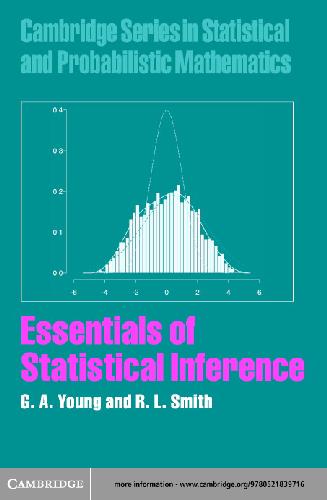

Most ebook files are in PDF format, so you can easily read them using various software such as Foxit Reader or directly on the Google Chrome browser.
Some ebook files are released by publishers in other formats such as .awz, .mobi, .epub, .fb2, etc. You may need to install specific software to read these formats on mobile/PC, such as Calibre.
Please read the tutorial at this link: https://ebookbell.com/faq
We offer FREE conversion to the popular formats you request; however, this may take some time. Therefore, right after payment, please email us, and we will try to provide the service as quickly as possible.
For some exceptional file formats or broken links (if any), please refrain from opening any disputes. Instead, email us first, and we will try to assist within a maximum of 6 hours.
EbookBell Team

4.0
46 reviewsPreface
This book aims to provide a concise but comprehensive account of the essential elements of
statistical inference and theory. It is designed to be used as a text for courses on statistical
theory for students of mathematics or statistics at the advanced undergraduate or Masters
level (UK) or the first-year graduate level (US), or as a reference for researchers in other
fields seeking a concise treatment of the key concepts of and approaches to statistical
inference. It is intended to give a contemporary and accessible account of procedures used
to draw formal inference from data.
The book focusses on a clear presentation of the main concepts and results underlying
different frameworks of inference, with particular emphasis on the contrasts among
frequentist, Fisherian and Bayesian approaches. It provides a description of basic material
on these main approaches to inference, as well as more advanced material on recent
developments in statistical theory, including higher-order likelihood inference, bootstrap
methods, conditional inference and predictive inference. It places particular emphasis on
contemporary computational ideas, such as applied in bootstrap methodology and Markov
chain Monte Carlo techniques of Bayesian inference. Throughout, the text concentrates
on concepts, rather than mathematical detail, but every effort has been made to present
the key theoretical results in as precise and rigorous a manner as possible, consistent with
the overall mathematical level of the book. The book contains numerous extended examples
of application of contrasting inference techniques to real data, as well as selected
historical commentaries. Each chapter concludes with an accessible set of problems and
exercises.
Prerequisites for the book are calculus, linear algebra and some knowledge of basic
probability (including ideas such as conditional probability, transformations of densities
etc., though not measure theory). Some previous familiarity with the objectives of and
main approaches to statistical inference is helpful, but not essential. Key mathematical and
probabilistic ideas are reviewed in the text where appropriate.